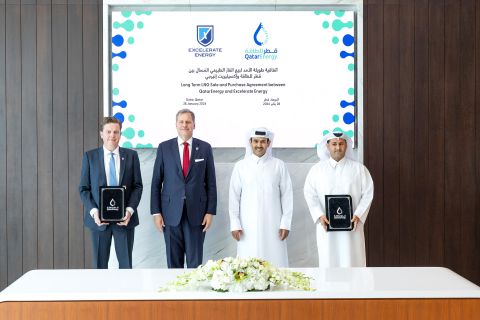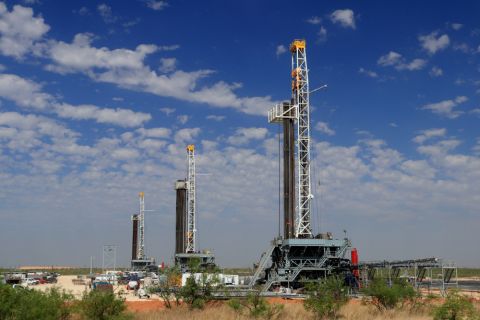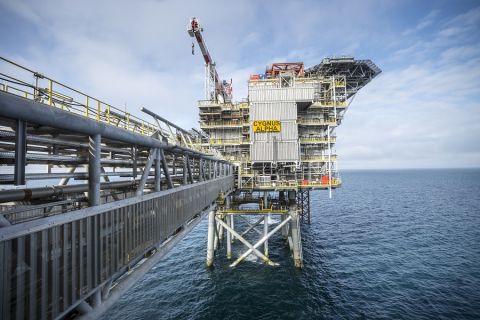
In December, the National Petroleum Council, under chairman Greg L. Armstrong (retired chairman of Plains All American Pipeline), delivered its study on CCUS. (Source: Shutterstock.com)
More than two years ago, in February 2018, Congress passed enhanced tax incentives for carbon capture, use and storage technology (CCUS). The credits, known as 45Q tax credits under the Internal Revenue Service (IRS) tax code, are meant to encourage new CCUS projects in the U.S. and help reduce the cost of capturing carbon, advocates say.
The new tax incentives more than doubled the amount companies can claim for captured carbon, from $10 per metric ton to $35 per metric ton for carbon capture when it’s paired with EOR, and from $20 per metric ton to up to $50 per metric ton for projects that store carbon in salt cavern reservoirs.
However, the IRS and U.S. Treasury Dept. have not yet issued final rules on exactly how to implement these credits, causing CCUS proponents a great deal of frustration. Former Energy Secretary Rick Perry had urged the IRS to speed up action on the problem, but nothing has happened since he left office last year and new Energy Secretary Dan Brouillette assumed the position.
Addressing a meeting of the Atlantic Council in February, Sen. Sheldon Whitehouse, D-R.I., said, “There is no legitimate excuse for this regulation having taken two full years.” He urged CCUS developers and others to give the Treasury Department a “swift kick in the rear,” according to press reports.
Last April, Senate Energy and Natural Resources Committee ranking member Joe Manchin, D-W.Va., introduced legislation asking for more federal R&D dollars for CCUS.
Meanwhile, in December, the National Petroleum Council (NPC), under chairman Greg L. Armstrong (retired chairman of Plains All American Pipeline), delivered its study on CCUS that Perry had requested. The study included input from 300 participants from the oil and gas and other industries, the DOE and academia. It made recommendations to implement such projects and provide a road map to speed up development, and sent a letter to Brouillette asking that action be taken.
The study looked at the entire value chain from carbon capture to use and storage in across diverse industrial sectors. It addressed the technical, legal, regulatory and economic factors involved and asked for more federal intervention in the form of enabling policies and R&D.
Study leaders included the former chairman of BP America, the CEOs of Occidental Petroleum Corp., Schlumberger Ltd., Shell Oil Co., Bechtel, Valero Energy Corp. and Southern Gas Co., among many others.
“In the first phase, clarifying existing tax policy and regulations could double existing U.S. capacity within the next five to seven years,” the study said. “Extending and expanding current policies and developing a durable legal and regulatory framework could enable a second phase of CCUS projects (i.e., 75 to 85 mtpa) within the next 15 years. Achieving CCUS deployment at scale (i.e., an additional 350 to 400 mtpa) within the next 25 years, will require substantially increased support driven by national policies.”
A cost assessment tool for CCUS has been developed by Gaffney, Cline & Associates, allowing stakeholders to change the cost and financial assumptions to generate their own view of costs. It was expected to be available in late January 2020, according to the NPC study. Further details and the full study are available at npc.org.
Recommended Reading
Excelerate Energy, Qatar Sign 15-year LNG Agreement
2024-01-29 - Excelerate agreed to purchase up to 1 million tonnes per anumm of LNG in Bangladesh from QatarEnergy.
UK’s Union Jack Oil to Expand into the Permian
2024-01-29 - In addition to its three mineral royalty acquisitions in the Permian, Union Jack Oil is also looking to expand into Oklahoma via joint ventures with Reach Oil & Gas Inc.
Permian Resources Continues Buying Spree in New Mexico
2024-01-30 - Permian Resources acquired two properties in New Mexico for approximately $175 million.
Eni, Vår Energi Wrap Up Acquisition of Neptune Energy Assets
2024-01-31 - Neptune retains its German operations, Vår takes over the Norwegian portfolio and Eni scoops up the rest of the assets under the $4.9 billion deal.
NOG Closes Utica Shale, Delaware Basin Acquisitions
2024-02-05 - Northern Oil and Gas’ Utica deal marks the entry of the non-op E&P in the shale play while it’s Delaware Basin acquisition extends its footprint in the Permian.





